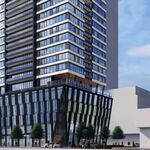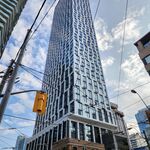M
mpolo2
Guest
Web-exclusive comment
A plague of planners
RANDAL O'TOOLE
Special to Globe and Mail Update
Last summer, the U.S. Supreme Court provoked widespread outrage when, by a 5-4 decision, it allowed cities to take people's land by eminent domain and give or sell the land to private developers. But few noted that the justification was "a comprehensive development plan."
This week's World Urban Forum in Vancouver notes that the world's cities and slums are growing fast so "the need for a focused set of objectives has never been greater" - meaning more and more planning by more and more bureaucracies. So we should be wary when the United Nations' World's Cities report, which was released on Monday, says the world's poorest slums will need $20- billion (U.S.) a year to improve services.
The Supreme Court's majority in Kelo v. New London assumed that the benefits of the Connecticut city's plan would be greater than the costs. But rather than ask whether that had been true of previous plans, the court simply judged the planners by their intentions, not their results.
In fact, comprehensive urban plans in the United States, and the rest of the developed and developing world, have a nasty habit of costing far more than the planners project, producing far fewer benefits and causing all sorts of unintended harmful consequences.
The reason is simple: Cities, like economies, are far too complex to scientifically plan. Rather than admit they can't do it, planners follow simplistic fads. In the 1950s, the fad was high-rise public housing projects, which proved disastrous all over the world. Today, the fad is "smart growth," packing people into high-density, mixed-use developments and rebuilding existing neighbourhoods of single-family homes with higher densities.
My hometown of Portland, Ore., is recognized throughout the United States as the model for "smart growth." In 1992, planners promised to save the Portland region from becoming like Los Angeles, the most congested, most polluted and one of the most expensive urban areas in America. To do this, Portland planners decided to increase the region's population density by 70 per cent, build few new roads (because new roads encourage people to drive) and, instead, build lots of light-rail and streetcar lines.
As an afterthought, planners compared other urban areas across America with their future vision of Portland. One area turned out to have the highest population density, the fewest miles of freeway per capita, and an expensive system of passenger rail lines. Which urban area was it? Why, Los Angeles, of course.
Los Angeles is congested because it has so many people crammed into it with so few freeways. It is polluted because cars pollute more in congested traffic. Rail transit proved so expensive that the regional transit agency cut bus service, leading to a 17-per-cent drop in bus riders in the decade after 1985. Despite this, Portland planners acknowledged that Los Angeles "displays an investment pattern we desire to replicate" in Portland.
Today, many residents agree that Portland's plan has proved to be a disaster. The region has some of the worst congestion in America.
Rather than relieve congestion, planners seek to quintuple it in the faint hope that more people will ride the $1.5- billion rail lines that carry less than 1 per cent of travel.
Planners' limits on the land available for development and other rules also drove up housing costs. During the 1990s, prices rose faster than any other urban area in the United States. Far from worrying about this, planners express elation that they have driven land values so high that developers will tear down single-family homes and replace them with apartments.
High housing costs led families with children to flee to nearby (and relatively unregulated) Vancouver, Wash., and more distant suburbs where they can afford a home with a yard. As a result, Portland is closing four to six schools a year, yet still has a $57-million gap in its school budget because planners diverted so many tax dollars to their utopian high-density housing projects.
As ever, the poor suffer most. High prices are pushing Portland's black population out of low-rent single-family homes into soulless apartment blocks far from the communities they considered home.
Urban planning advocates have failed to learn the chief lesson of the 20th century: that comprehensive, centralized government planning does not work. Planning a city or urban area presumes that planners can gather all the data they need, predict the future, and be immune to political pressures.
The truth is, no one can ever collect or understand enough data to understand a complex urban area, much less predict the future. But "if economic reality is so complex that it can only be described by complicated mathematical models," says planning guru Herman Daly, "then the reality should be simplified." Lenin would have liked that.
Rail transit, for example, is a simplification that limits, rather than expands, mobility, giving planners more control over people's lives. So planners in Portland, San Francisco and others eagerly propose to spend 60 per cent to 70 per cent of their regions' transportation funds on transit systems that carry only 1 per cent to 4 per cent of passenger travel. Recent scandals in Portland revealed that the main beneficiaries of these rail lines and high-density developments have been a few politically connected contractors and developers.
The promises that planners make are simply impossible to keep.
Those who wish to see their regions become like Los Angeles - congested, expensive and highly taxed - should welcome urban planning. The rest of us should work to resolve urban problems by giving people the freedom to choose their lifestyles and to pay for what they want instead of what planners want.
Randal O'Toole, senior economist with the Oregon-based Thoreau Institute, is the author of "The Vanishing Automobile and Other Urban Myths: How Smart Growth Harms American Cities" and "The Planning Penalty: How Smart Growth Makes Housing Unaffordable".
--------------------------------------------------------
A plague of planners
RANDAL O'TOOLE
Special to Globe and Mail Update
Last summer, the U.S. Supreme Court provoked widespread outrage when, by a 5-4 decision, it allowed cities to take people's land by eminent domain and give or sell the land to private developers. But few noted that the justification was "a comprehensive development plan."
This week's World Urban Forum in Vancouver notes that the world's cities and slums are growing fast so "the need for a focused set of objectives has never been greater" - meaning more and more planning by more and more bureaucracies. So we should be wary when the United Nations' World's Cities report, which was released on Monday, says the world's poorest slums will need $20- billion (U.S.) a year to improve services.
The Supreme Court's majority in Kelo v. New London assumed that the benefits of the Connecticut city's plan would be greater than the costs. But rather than ask whether that had been true of previous plans, the court simply judged the planners by their intentions, not their results.
In fact, comprehensive urban plans in the United States, and the rest of the developed and developing world, have a nasty habit of costing far more than the planners project, producing far fewer benefits and causing all sorts of unintended harmful consequences.
The reason is simple: Cities, like economies, are far too complex to scientifically plan. Rather than admit they can't do it, planners follow simplistic fads. In the 1950s, the fad was high-rise public housing projects, which proved disastrous all over the world. Today, the fad is "smart growth," packing people into high-density, mixed-use developments and rebuilding existing neighbourhoods of single-family homes with higher densities.
My hometown of Portland, Ore., is recognized throughout the United States as the model for "smart growth." In 1992, planners promised to save the Portland region from becoming like Los Angeles, the most congested, most polluted and one of the most expensive urban areas in America. To do this, Portland planners decided to increase the region's population density by 70 per cent, build few new roads (because new roads encourage people to drive) and, instead, build lots of light-rail and streetcar lines.
As an afterthought, planners compared other urban areas across America with their future vision of Portland. One area turned out to have the highest population density, the fewest miles of freeway per capita, and an expensive system of passenger rail lines. Which urban area was it? Why, Los Angeles, of course.
Los Angeles is congested because it has so many people crammed into it with so few freeways. It is polluted because cars pollute more in congested traffic. Rail transit proved so expensive that the regional transit agency cut bus service, leading to a 17-per-cent drop in bus riders in the decade after 1985. Despite this, Portland planners acknowledged that Los Angeles "displays an investment pattern we desire to replicate" in Portland.
Today, many residents agree that Portland's plan has proved to be a disaster. The region has some of the worst congestion in America.
Rather than relieve congestion, planners seek to quintuple it in the faint hope that more people will ride the $1.5- billion rail lines that carry less than 1 per cent of travel.
Planners' limits on the land available for development and other rules also drove up housing costs. During the 1990s, prices rose faster than any other urban area in the United States. Far from worrying about this, planners express elation that they have driven land values so high that developers will tear down single-family homes and replace them with apartments.
High housing costs led families with children to flee to nearby (and relatively unregulated) Vancouver, Wash., and more distant suburbs where they can afford a home with a yard. As a result, Portland is closing four to six schools a year, yet still has a $57-million gap in its school budget because planners diverted so many tax dollars to their utopian high-density housing projects.
As ever, the poor suffer most. High prices are pushing Portland's black population out of low-rent single-family homes into soulless apartment blocks far from the communities they considered home.
Urban planning advocates have failed to learn the chief lesson of the 20th century: that comprehensive, centralized government planning does not work. Planning a city or urban area presumes that planners can gather all the data they need, predict the future, and be immune to political pressures.
The truth is, no one can ever collect or understand enough data to understand a complex urban area, much less predict the future. But "if economic reality is so complex that it can only be described by complicated mathematical models," says planning guru Herman Daly, "then the reality should be simplified." Lenin would have liked that.
Rail transit, for example, is a simplification that limits, rather than expands, mobility, giving planners more control over people's lives. So planners in Portland, San Francisco and others eagerly propose to spend 60 per cent to 70 per cent of their regions' transportation funds on transit systems that carry only 1 per cent to 4 per cent of passenger travel. Recent scandals in Portland revealed that the main beneficiaries of these rail lines and high-density developments have been a few politically connected contractors and developers.
The promises that planners make are simply impossible to keep.
Those who wish to see their regions become like Los Angeles - congested, expensive and highly taxed - should welcome urban planning. The rest of us should work to resolve urban problems by giving people the freedom to choose their lifestyles and to pay for what they want instead of what planners want.
Randal O'Toole, senior economist with the Oregon-based Thoreau Institute, is the author of "The Vanishing Automobile and Other Urban Myths: How Smart Growth Harms American Cities" and "The Planning Penalty: How Smart Growth Makes Housing Unaffordable".
--------------------------------------------------------




